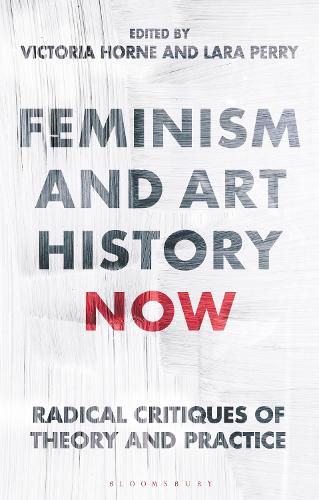Readings Newsletter
Become a Readings Member to make your shopping experience even easier.
Sign in or sign up for free!
You’re not far away from qualifying for FREE standard shipping within Australia
You’ve qualified for FREE standard shipping within Australia
The cart is loading…






To what extent have developments in global politics, artworld institutions and local cultures reshaped the critical directions of feminist art historians? The significant research gathered in Feminism and Art History Now engages with the rich inheritance of feminist historiography since around 1970, and considers how to maintain the forcefulness of its critique while addressing contemporary political struggles.
Taking on subjects that reflect the museological, global and materialist trajectories of 21st-century art historical scholarship, the chapters address the themes of Invisibility, Temporality, Spatiality and Storytelling. They present new research on a diversity of topics that span political movements in Italy, urban gentrification in New York, community art projects in Scotland and Canada’s contemporary indigenous culture. Case studies focus on the art of Lee Krasner, The Emily Davison Lodge, Zoe Leonard, Martha Rosler, Carla Lonzi and Womanhouse. Together with a synthesising introductory essay, these case studies provide readers with a view of feminist art histories of the past, present and future.
$9.00 standard shipping within Australia
FREE standard shipping within Australia for orders over $100.00
Express & International shipping calculated at checkout
To what extent have developments in global politics, artworld institutions and local cultures reshaped the critical directions of feminist art historians? The significant research gathered in Feminism and Art History Now engages with the rich inheritance of feminist historiography since around 1970, and considers how to maintain the forcefulness of its critique while addressing contemporary political struggles.
Taking on subjects that reflect the museological, global and materialist trajectories of 21st-century art historical scholarship, the chapters address the themes of Invisibility, Temporality, Spatiality and Storytelling. They present new research on a diversity of topics that span political movements in Italy, urban gentrification in New York, community art projects in Scotland and Canada’s contemporary indigenous culture. Case studies focus on the art of Lee Krasner, The Emily Davison Lodge, Zoe Leonard, Martha Rosler, Carla Lonzi and Womanhouse. Together with a synthesising introductory essay, these case studies provide readers with a view of feminist art histories of the past, present and future.